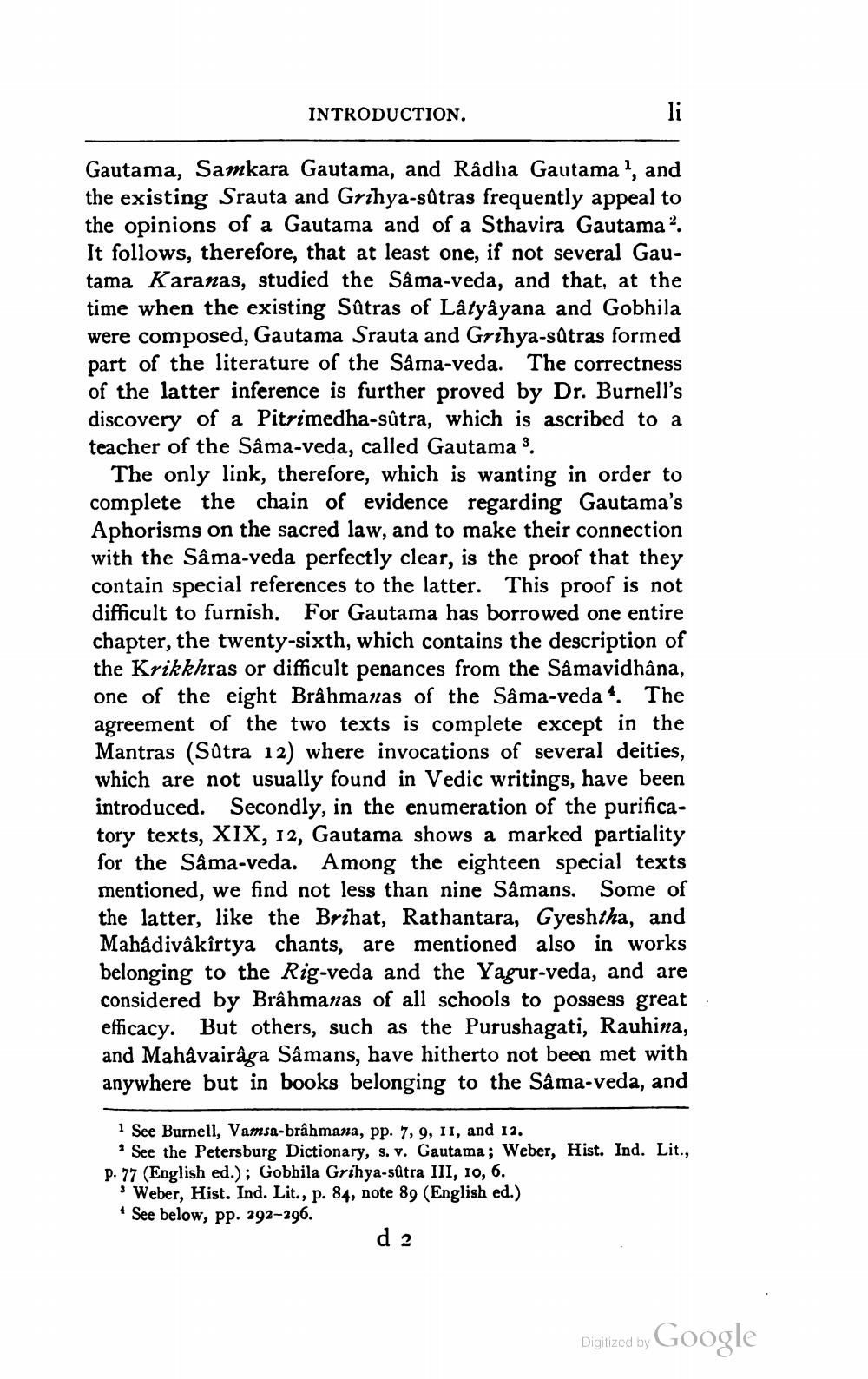________________
INTRODUCTION.
li
Gautama, Samkara Gautama, and Râdha Gautama1, and the existing Srauta and Grihya-sûtras frequently appeal to the opinions of a Gautama and of a Sthavira Gautama2. It follows, therefore, that at least one, if not several Gautama Karanas, studied the Sâma-veda, and that, at the time when the existing Sûtras of Lâtyâyana and Gobhila were composed, Gautama Srauta and Grihya-sûtras formed part of the literature of the Sâma-veda. The correctness of the latter inference is further proved by Dr. Burnell's discovery of a Pitrimedha-sûtra, which is ascribed to a teacher of the Sâma-veda, called Gautama 3.
The only link, therefore, which is wanting in order to complete the chain of evidence regarding Gautama's Aphorisms on the sacred law, and to make their connection with the Sâma-veda perfectly clear, is the proof that they contain special references to the latter. This proof is not difficult to furnish. For Gautama has borrowed one entire chapter, the twenty-sixth, which contains the description of the Krikkhras or difficult penances from the Sâmavidhâna, one of the eight Brahmanas of the Sâma-veda1. The agreement of the two texts is complete except in the Mantras (Sûtra 12) where invocations of several deities, which are not usually found in Vedic writings, have been introduced. Secondly, in the enumeration of the purificatory texts, XIX, 12, Gautama shows a marked partiality for the Sâma-veda. Among the eighteen special texts mentioned, we find not less than nine Sâmans. Some of the latter, like the Brihat, Rathantara, Gyeshtha, and Mahâdivâkîrtya chants, are mentioned also in works belonging to the Rig-veda and the Yagur-veda, and are considered by Brahmanas of all schools to possess great efficacy. But others, such as the Purushagati, Rauhina, and Mahâvairâga Sâmans, have hitherto not been met with anywhere but in books belonging to the Sâma-veda, and
1 See Burnell, Vamsa-brâhmana, pp. 7, 9, 11, and 12.
* See the Petersburg Dictionary, s. v. Gautama; Weber, Hist. Ind. Lit.,
p. 77 (English ed.); Gobhila Grihya-sûtra III, 10, 6.
3 Weber, Hist. Ind. Lit., p. 84, note 89 (English ed.) See below, pp. 292-296.
d 2
Digitized by Google




